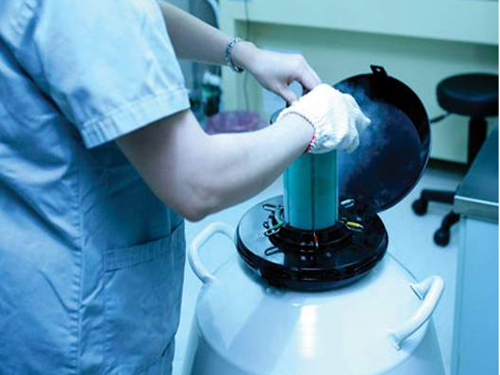
Cell cryopreservation is one of the important methods for cell survival. Using cryopreservation techniques, the cells are placed in -196°C liquid nitrogen and survived at low temperatures. This allows the cells to temporarily leave the growth state and survive their cell characteristics, so that they can be used again when necessary. Resuscitator cells are used for implementation. Moderately survival of a certain amount of cells can prevent cells from being lost due to contamination of cells being created or other unexpected changes, and play a role in cell preservation.
In addition, cells can also be used to purchase, send, exchange, and transport certain cells. When the cells are cryopreserved, a masking agent is added to the culture base. The final concentration of glycerol or dimethyl sulfoxide (DMSO) is 5% to 15%, which can cause the solution to freeze at a low temperature. In addition, when the cells are dull and frozen, the water in the cells is revealed. , eliminated the formation of ice crystals, thereby preventing cell damage. The scale freezing rate starts at -1 to -2°C/min, and can be accelerated when the temperature is lower than -25°C, and can be directly injected into liquid nitrogen (-196°C) after -80°C.
The commonly used masking agents are dimethyl sulfoxide (DMSO) and glycerol. They are non-toxic to cells, have a low molecular weight, and have a high solubility and easily penetrate cells.
Use materials
Instruments: liquid nitrogen tanks, cryogenic storage tubes (special plastic cryopreservation tubes or ampoules), centrifuge tubes, pipettes, centrifuges, etc.
Reagents: 0.25% trypsin, sclerotin, bases containing masking agents (ie, cryopreservation)
Attachment: Preparation of cryopreservation: Create a base to participate in glycerol or DSMO to a final concentration of 5-20%. The type and amount of the masking agent differ depending on the cells. Survive at 4°C.
Operation step
1. Digest the cells and network the cell suspension into a centrifuge tube.
2. Centrifuge at 1000 rpm for 10 minutes and discard the supernatant.
3. Precipitation plus creation of shielded fluid, counting, mediation to 5106/ml or so.
4. Dispense the suspension into cryovials, 1ml per tube.
5. Seal the cryovials. If an ampoule bottle is used for flame sealing, the seal must be strict, otherwise it will burst when it is awake.
6. Label the cell, specify the cell type, and freeze the date. A metal weight and a string are stored outside the cryovial.
7. Cool in the following order: room temperature → 4°C (20 minutes) → freezer freezer (30 minutes) → low temperature freezer (-30°C 1 hour) → gaseous nitrogen (30 minutes) → liquid nitrogen.
Note: Be alert when handling to avoid liquid nitrogen frostbite. Liquid nitrogen is regularly checked and added at any time. Absolutely no volatilization and cleanliness are available. Normally 30 litres of liquid nitrogen can be used for 1 to 1.5 months.
Matting Agent For Electrophoretic Coatings
Product Description
E-coating – also known as Electrophoretic Painting, Electrocoating, Electropainting etc. The coating materials (resins, pigments, additives, etc.) are dispersed in water and held in a bath. The parts to be coated are immersed in the solution and an electrical current is passed through the bath using the parts as an electrode.
Silica Paint Matting Agent is a very fine-grained wax after-treated precipitated silica as white powder.
Characteristics
High Matting Efficiency;
Excellent Transparency;
Easy to Disperse;
Excellent Hand-feeling
Applications:
Mainly used as a high-purity filler for e-coats due to its excellent suspension behavior and low electrical conductivity.
Matting Agent For Electrophoretic Coatings,E Coating Matting Agent,Electrophoretic Coatings Silica,White Powder Silica Matting Agent
Guangzhou Quanxu Technology Co Ltd , https://www.skychema.com
![<?echo $_SERVER['SERVER_NAME'];?>](/template/twentyseventeen/skin/images/header.jpg)